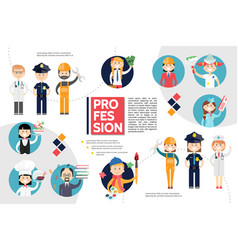Seasonal Factors In Business Exterior Painting: Trick Insights You Must Be Aware Of
Seasonal Factors In Business Exterior Painting: Trick Insights You Must Be Aware Of
Blog Article
Post Written By-Fox Whalen
When you're preparing an industrial external paint task, seasonal aspects can make or damage your results. You'll intend to think about exactly how temperature level and humidity impact paint application and drying out times. Selecting the right season can guarantee your paint adheres properly and lasts much longer. But which seasons are absolutely the most effective for this sort of job? Let's explore the key elements that can affect your task's success.
The Influence of Temperature Level on Paint Application
When you're planning a commercial outside paint job, the temperature level can considerably influence just how well the paint adheres and dries out.
Ideally, you intend to paint when temperature levels range in between 50 ° F and 85 ° F. If it's as well cool, the paint may not heal properly, causing concerns like peeling or breaking.
On the other hand, if it's also hot, the paint can dry as well swiftly, preventing proper bond and resulting in an uneven finish.
You need to also take into consideration the moment of day; morning or late afternoon supplies cooler temperature levels, which can be much more positive.
Always check the manufacturer's recommendations for the certain paint you're using, as they commonly provide advice on the ideal temperature variety for optimal outcomes.
Moisture and Its Result on Drying Times
Temperature isn't the only ecological variable that affects your commercial outside paint job; moisture plays a significant function too. High moisture levels can slow down drying times dramatically, impacting the general top quality of your paint job.
When the air is saturated with dampness, the paint takes longer to treat, which can bring about issues like bad attachment and a higher risk of mold development. If https://www.tucsonsentinel.com/arts/report/100622_dekooning_returned/willem-de-koonings-painting-woman-ochre-stolen-1985-comes-home-tucson/ on a specifically humid day, be prepared for prolonged delay times in between layers.
It's essential to keep an eye on local weather conditions and strategy accordingly. Ideally, restaurant painting services for moisture levels between 40% and 70% for ideal drying.
Keeping these consider mind ensures your task stays on track and delivers a long-term surface.
Best Seasons for Commercial Outside Paint Projects
What's the best time of year for your industrial exterior painting jobs?
Spring and very early fall are typically your best choices. During these seasons, temperatures are moderate, and humidity levels are often lower, producing optimal conditions for paint application and drying.
Prevent summer season's intense heat, which can create paint to dry also rapidly, bring about inadequate bond and coating. Similarly, winter's cold temperatures can hinder appropriate drying out and treating, risking the long life of your paint job.
Aim for days with temperatures between 50 ° F and 85 ° F for optimum outcomes. Bear in mind to inspect the local weather prediction for rain, as damp problems can wreck your job.
Preparation around these aspects ensures your paint task runs efficiently and lasts longer.
Verdict
Finally, planning your industrial exterior paint tasks around seasonal considerations can make a significant distinction in the result. By organizing work throughout the ideal temperature levels and humidity levels, you'll guarantee better bond and drying out times. Keep in mind to keep an eye on local weather forecasts and pick the right time of year-- spring and early autumn are your best choices. Taking these actions will certainly assist you achieve a sturdy and expert surface that lasts.
